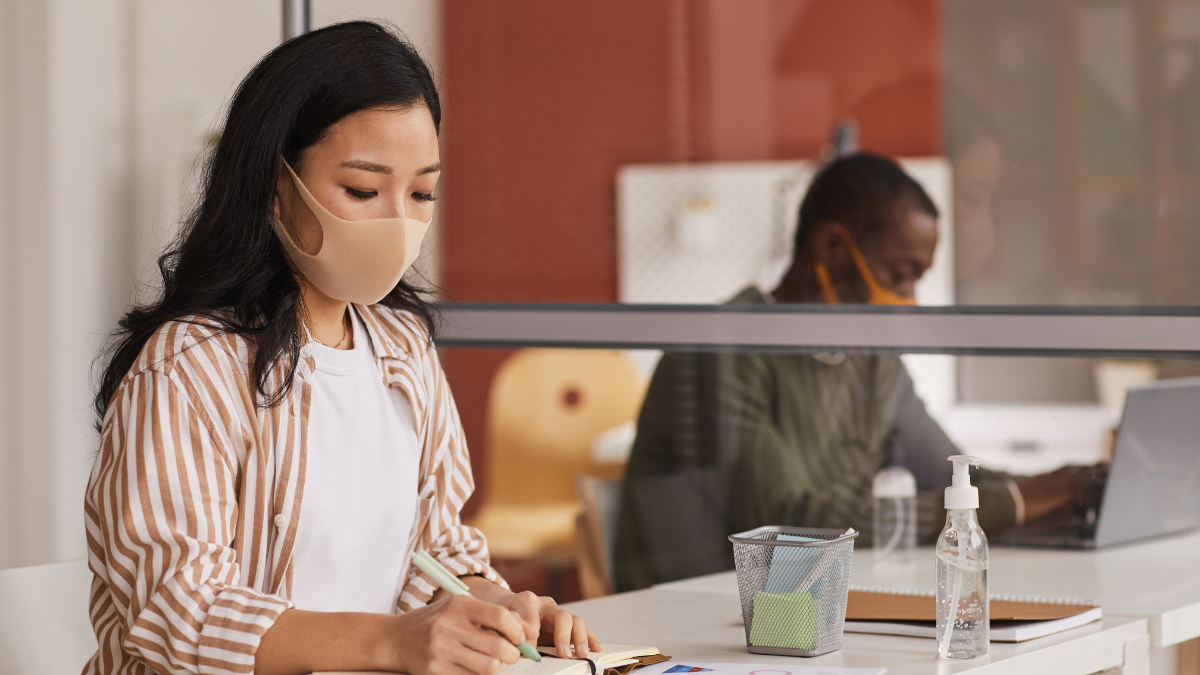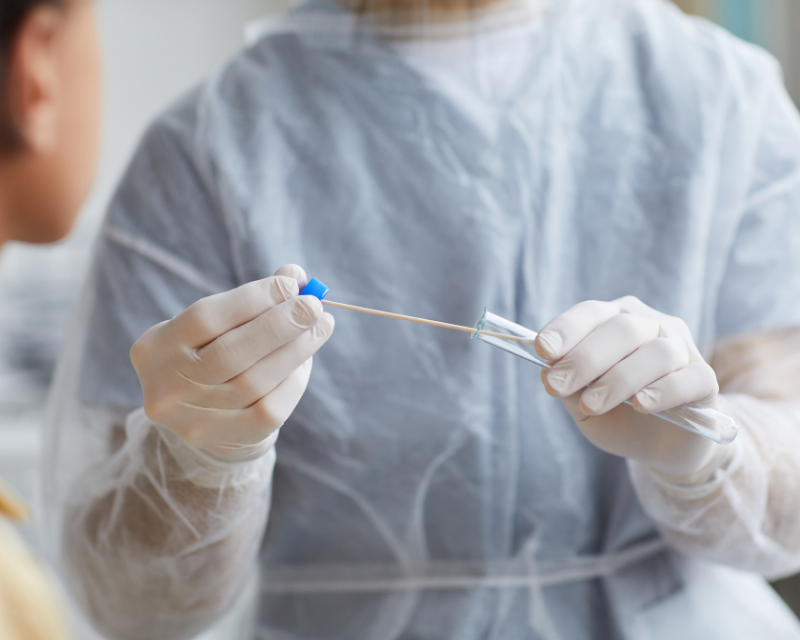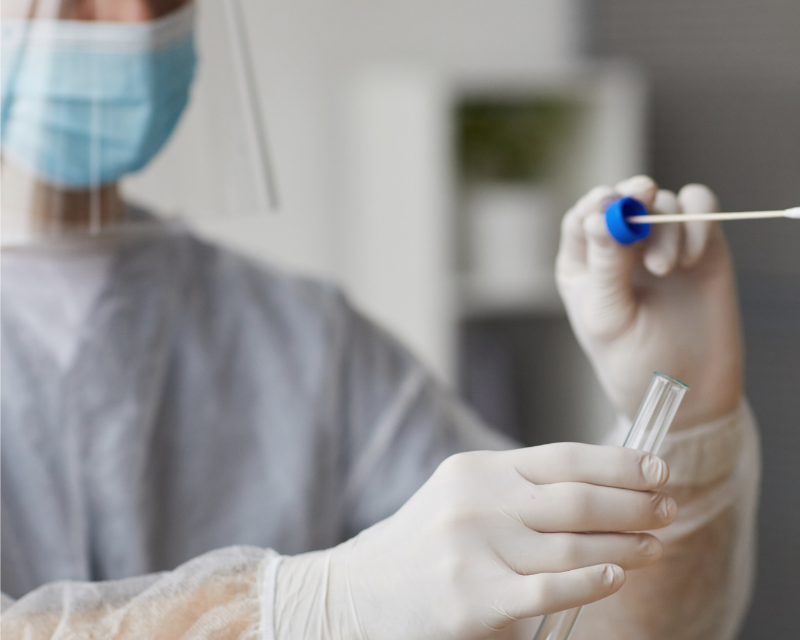The Employer's Guide to Setting Up an Employee COVID-19 Screening Program
As vaccination rates increase and COVID-19 hospitalizations and deaths decrease, many employers are increasingly eager to welcome their employees back to the office. Make no mistake, COVID-19 continues to be a threat, and working near others increases the risk of getting and transmitting the virus.
Without proper safety protocols in place, reopening an office can have serious consequences, including reducing employee morale and putting employees’ lives and those in their households at risk.
According to the CDC, screening for COVID-19 may be an effective addition to a business’s COVID-19 prevention and control strategy. By testing asymptomatic workers without known or suspected exposure to COVID-19, employers may be able to detect the virus early and reduce transmission in the workplace.
Screening
Employers should continue to evaluate the health of their employees regardless of COVID-19 vaccination status. Screening involves proactively testing asymptomatic individuals with no known exposure to a confirmed or suspected case of the virus.
The purpose of screening is to identify individuals who unknowingly have an active COVID-19 infection. By catching asymptomatic cases, employers may be able to minimize the spread of the virus and prevent a potential outbreak in the workplace.
Benefits of Screening
Reduces Asymptomatic Spread
In January 2021, The Journal of the American Medical Association published an article, “SARS-CoV-2 Transmission From People Without COVID-19 Symptoms,” investigating the proportion of asymptomatic individuals contributing to the transmission of COVID-19. The study found that over half of COVID-19 cases came from people who do not have symptoms. More specifically, the study found that 35% of COVID-19 infections came from pre-symptomatic people, and 24% of cases resulted from those who never developed symptoms. By screening, employers can identify active COVID-19 infections in asymptomatic workers and take steps to minimize transmission.
Fully Vaccinated People Can Still Get COVID-19
It’s rare for a vaccine to offer 100% immunity from a specific disease. This level of protection is referred to as sterilizing immunity, and it has only been achieved for a few viruses, including measles and smallpox. Most vaccines offer effective immunity, meaning a person has protection from severe disease and death but can still be infected.
The current COVID-19 vaccines authorized in the U.S. offer the latter. Although they are incredibly effective in reducing the risk of being infected with COVID-19, they do not provide 100% immunity, and a fully vaccinated person can still get the virus. Fully vaccinated individuals may have also been exposed to the virus shortly before or after receiving the vaccine, meaning their body hasn’t had enough time to build immunity.
What’s more, there is still much uncertainty surrounding vaccines. Experts are not sure how long the vaccines provide immunity, nor do they know how well they protect against new variants of the virus. By regularly screening employees for COVID-19, including those who are fully vaccinated, employers can identify positive results, even in those who are at low risk for getting the virus.
Types of Workplaces
Although many businesses can benefit from including some kind of testing protocol into their reopening strategy, certain types of workplaces will find the additional layer of safety particularly helpful. The CDC recommends the following workplace types consider screening testing as part of their COVID-19 mitigation strategy:
- Workplaces where the risk of COVID-19 introduction is high, such as those where employees interact with the public: Examples include salons, bars, restaurants, and retail stores. This category also comprises workplaces in communities where transmission is moderate to high.
- Workplaces where the risk of COVID-19 transmission is high, especially where physical distancing can be a challenge: Examples include manufacturing facilities, food processing plants, cruise ships, and workplaces with congregate housing.
- Workplaces where a COVID-19 infection among employees can have adverse health outcomes: Examples include remote locations where it may be difficult to seek medical care, settings where the continuity of operations is high-priority, settings where a large number of individuals have comorbidities or known heightened risk factors for having an adverse reaction including assisted living and nursing home sites and workplaces where a large portion of employees are at risk of severe illness.

Creating a Screening Program
An employer must make several decisions when creating an employee screening program in the workplace. First is the type of test.
Types of Tests
There are two main types of tests available in the U.S. to detect an active COVID-19 infection: PCR tests and antigen tests.
PCR Tests
PCR (polymerase chain reaction) tests, also referred to as molecular tests, work by detecting the genetic material specific to the virus. They are considered the “gold standard” in diagnostic testing because they are the most accurate and sensitive tests available for detecting COVID-19.
Antigen Tests
Antigen tests work by detecting specific viral proteins on the surface of the virus. They are not as sensitive as PCR tests, meaning they are less likely to detect an infection if the viral load (how much of the virus is in the body) is low.
Factors to Consider When Selecting a Test
Test Accuracy
Different tests vary in how accurately they can detect COVID-19 in a sample. A test's accuracy in detecting COVID-19 in a sample is called sensitivity.
Viral load is often associated with the severity of symptoms. Although inconclusive, research suggests that asymptomatic individuals may have a smaller viral load in comparison to individuals with increased reported severity of infection and symptomatology.
When it comes to detecting the virus in those with little to no symptoms, it may be necessary to use a highly sensitive test like a PCR test to avoid a false negative.
Turnaround Time for Results
Turnaround time for results is an essential factor to consider when selecting a COVID-19 test. The faster the results, the quicker you can identify and notify an employee testing positive so they can self-isolate to avoid spreading the virus to others.
When evaluating time, you should consider the time it takes to collect samples, get them to the lab, run tests, and communicate results. Most antigen tests can be run with results on-site in minutes, while most PCR tests require the specimen to be sent to a lab.
Scalability
Employers should also consider scalability when selecting a test. With antigen tests, one sample can be run at a time. For this reason, they are best suited for screening smaller numbers of people.
PCR tests are more scalable. Hundreds of PCR tests can be run simultaneously, making PCR testing ideal for testing large numbers of people.
Additional Decisions
In addition to the type of test used, employers also must make decisions regarding sample collection and testing frequency.

Testing Frequency
How often you test your employees will vary depending on your business’s unique situation. Some employers may offer testing to employees before initially returning to the office. Others may offer testing periodically at regular intervals. The CDC recommends weekly screening due to the incubation period (the time from exposure to development of symptoms) of COVID-19, which can range from 2-14 days. When making decisions regarding testing frequency, the following should be considered:
- Testing availability, turnaround time, and cost
- The type of workplace and if the risk of infection is high or a large portion of employees are at risk for severe illness
- Number of employees who tested positive during previous testing rounds
- Relevant experience with outbreaks at the workplace

Sample Collection
Employers will also need to make decisions regarding sample type, collection method, and sample receiving. First and foremost, what type of sample will be used?
- Nasopharyngeal swab sample, which requires a long nasal swab used to collect a specimen from the back of the nose (the nasopharynx).
- Anterior nares swab samples, which require a shorter nasal swab to collect a specimen.
- Saliva sample, which requires the individual to spit a sample into a tube.
Next, what sample collection method will be used?
- Professional collection by a health care provider involves using trained medical personnel to collect samples and is necessary if obtaining nasopharyngeal samples.
- Supervised collection occurs when a health care professional supervises the person collecting their own sample, in-person or via telemedicine. This method is used when collecting nasal swab and saliva samples.
- Self-collection is when individuals collect their own samples. This method is also used with nasal swab and saliva samples.
Finally, how will samples be obtained and sent to a lab?
Will samples be collected via concierge service, mail-in of samples, or at a walk-in or drive-through testing center?
Safety First
COVID-19 affects everyone differently. And the reality is, you never know how it will affect you, your employees, or your workplace. Although most cases result in mild to moderate symptoms, others can be more severe, resulting in hospitalization and even death. By incorporating an employee screening program into your COVID-19 prevention and control strategy, you may be able to protect your workers and their families from the harmful effects of the virus.
For information regarding Vivera’s COVID-19 testing opinions, please contact us at (844) 484-8372.
